 W
WAllosaurus is a genus of large carnivorous theropod dinosaur that lived 155 to 145 million years ago during the late Jurassic period. The name "Allosaurus" means "different lizard" alluding to its unique concave vertebrae. It is derived from the Greek ἄλλος and σαῦρος. The first fossil remains that could definitively be ascribed to this genus were described in 1877 by paleontologist Othniel Charles Marsh. As one of the first well-known theropod dinosaurs, it has long attracted attention outside of paleontological circles.
 W
WAlocodon is a genus of ornithischian dinosaur from the Middle and Late Jurassic of what is now Portugal and also possibly England. It was described in 1975 by Richard Anthony Thulborn. It had small ornithopod-like teeth with vertical grooves. This animal is only known from these teeth, and is usually considered a nomen dubium.
 W
WAviatyrannis is a genus of carnivorous tyrannosauroid theropod dinosaur from the Kimmeridgian stage of the Late Jurassic found in Portugal.
 W
WCeratosaurus was a carnivorous theropod dinosaur in the Late Jurassic period. This genus was first described in 1884 by American paleontologist Othniel Charles Marsh based on a nearly complete skeleton discovered in Garden Park, Colorado, in rocks belonging to the Morrison Formation. The type species is Ceratosaurus nasicornis.
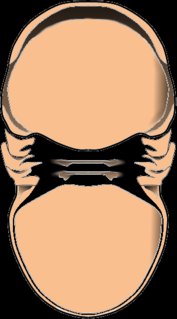 W
WDelgadella is a diminutive trilobite that lived during the late Lower Cambrian and has been found in Russia, Mongolia, Spain, Italy (Sardinia), Portugal, Morocco and Canada (Newfoundland). It can be recognized by its strongly effaced headshield and tailshield, with narrow but distinct furrows and borders along its margins, and three thorax segments.
 W
WDiacodexis is an extinct genus of small herbivore mammals belonging to the family Dichobunidae which lived in North America, Europe and Asia from 55.4 mya to 46.2 mya and existing for approximately 9.2 million years .
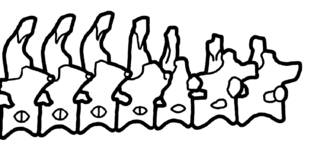 W
WDinheirosaurus is a genus of diplodocid sauropod dinosaur that is known from fossils uncovered in modern-day Portugal. It may represent a species of Supersaurus. The only species is Dinheirosaurus lourinhanensis, first described by José Bonaparte and Octávio Mateus in 1999 for vertebrae and some other material from the Lourinhã Formation. Although the precise age of the formation is not known, it can be dated around the early Tithonian of the Late Jurassic.
 W
WDryolestes is an extinct genus of Late Jurassic mammal from the Morrison Formation and the Alcobaça Formation of Portugal. The type species Dryolestes priscus is present in stratigraphic zones 2, 5, and 6.
 W
WEuronychodon is the name given to a genus of coelurosaur dinosaur from the Late Cretaceous of Europe and Asia. Euronychodon is known from teeth only. These are similar to those of another coelurosaur tooth genus, Paronychodon.
 W
WHenkelotherium is an extinct genus of mammal from the Late Jurassic (Kimmeridgian) Camadas de Guimarota, in Portugal. It differs from most other paurodontids in having more postcanine teeth.
 W
WKrokolithes is an oogenus of Crocodiloid eggs. These eggs were laid by an extinct species of Crocodylian. It contains three oospecies, "K. dinophilus", K. wilsoni and K. helleri.
 W
WLeptaena is an extinct genus of mid-sized brachiopod that existes from the Dariwilian epoch to the Emsian epoch, though some specimens have been found in strata as late in age as the Tournasian epoch. Like some other Strophomenids, Lepteana were epifaunal, meaning they lived on top of the seafloor, not buried within it, and were suspension feeders.
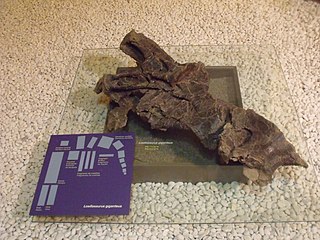 W
WLosillasaurus is a genus of sauropod dinosaur from the Late Jurassic and possibly Early Cretaceous (Kimmeridgian-?Berriasian) in the southeast of Spain. The type species of the turiasaurian Losillasaurus giganteus was discovered in the Villar del Arzobispo Formation and later the Praia de Amoreira-Porto Novo Formation in Valencia and formally described by Casanovas, Santafé and Sanz in 2001. The holotype material is from a subadult and includes part of a skull; complete cervical, dorsal, sacral, and caudal vertebrae as well as several fragments; skeletal elements from the limbs including a humerus, ulna, radius, and metacarpal; sternal plates; and from the pelvis: the ilium, ischium, and pubis. The genus is characterized by the dimension and shape of the neural spine of the proximal caudal vertebrae. The humerus is 143 centimetres (56 in) long, which despite being from a subadult specimen is within 20% of the size of Paralititan. The size estimation proposed by Francisco Gascó in his master thesis is 15–18 m (49–59 ft) and 12-15 tons.
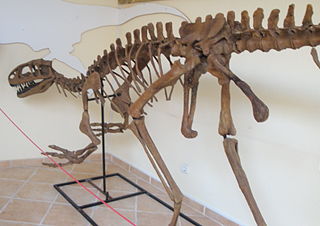 W
WLourinhanosaurus was a genus of carnivorous theropod dinosaur that lived during the Late Jurassic Period (Kimmeridgian/Tithonian) in Portugal. It is one of many large predators discovered at the Lourinhã Formation and probably competed with coeval Torvosaurus gurneyi, Allosaurus europaeus, and Ceratosaurus.
 W
WLusotitan is a genus of herbivorous brachiosaurid sauropod dinosaur from the Late Jurassic Period of Portugal.
 W
WMetoposaurus meaning "front lizard" is an extinct genus of stereospondyl temnospondyl amphibian, known from the Late Triassic of Germany, Italy, Poland, and Portugal. This mostly aquatic animal possessed small, weak limbs, sharp teeth, and a large, flat head. This highly flattened creature mainly fed on fish, which it captured with its wide jaws lined with needle-like teeth. Metoposaurus was up to 3 m long and weighed about 450 kg. Many Metoposaurus mass graves have been found, probably from creatures that grouped together in drying pools during drought.
 W
WMiragaia is a long-necked stegosaurid dinosaur. Its fossils have been found in Upper Jurassic rocks in Portugal. Miragaia has the longest neck known for any stegosaurian, which included at least seventeen vertebrae.
 W
WPelagornis is a widespread genus of prehistoric pseudotooth birds. These were probably rather close relatives of either pelicans and storks, or of waterfowl, and are here placed in the order Odontopterygiformes to account for this uncertainty.
 W
WPelorosaurus is a genus of titanosauriform sauropod dinosaur. Remains referred to Pelorosaurus date from the Early Cretaceous period, about 140-125 million years ago, and have been found in England and Portugal. Thomas Holtz estimated its length at 24 meters.
 W
WPhyllodon was a genus of small ornithischian dinosaur from the Kimmeridgian-age Upper Jurassic Camadas de Guimarota Formation of Leiria, Portugal and possibly also the Chipping Norton Limestone of England. It may have been closely related to contemporaneous dinosaurs in North America.
 W
WPlacoparia is a genus of trilobites of average size that lived during the late Lower to the early Upper Ordovician on the paleocontinents Gondwana, Avalonia and Laurentia, now the Czech Republic, France, Germany, Morocco, Portugal, Spain and Wales. Its headshield is semi-circular to rectangular with rounded frontal corners. It lacks eyes, but eye ridges are present. The fact that the facial sutures are opisthoparian is an exception in the otherwise proparian Cheirurina. The thorax has 11 or 12 segments, with the axis slightly wider than the ribs to its sides. The tips of the pleurae are free, which resembles an old-fashion central heating radiator. The axis in the small tailshield consists of four rings and a minute endpiece. The four pleurae end in spatulate spines that fit to corresponding indentations in the cephalon.
 W
WRafinesquina is an extinct genus of large brachiopod that existed from the Darriwilian to the Ludlow epoch.
 W
WRequienia is an extinct genus of fossil saltwater clam, a marine bivalve molluscs in the order Hippuritida, family Requieniidae. These rudists lived in the Cretaceous period, from the Valanginian age (136.4–140.2) to the Campanian age. They were stationary intermediate-level suspension feeders.
 W
WSuchoolithus is an oogenus of crocodylomorph eggs from the late Jurassic of Portugal. They are notable for their small size, and for being among the oldest known crocodylomorph eggs.
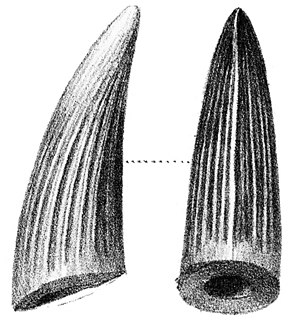 W
WSuchosaurus is a spinosaurid dinosaur from Cretaceous England and Portugal, originally believed to be a genus of crocodile. The type material, consisting of teeth, was used by British palaeontologist Richard Owen to name the species S. cultridens in 1841. Later in 1897, French palaeontologist Henri-Émile Sauvage named a second species, S. girardi, based on two fragments from the mandible and one tooth discovered in Portugal. Suchosaurus is possibly a senior synonym of the contemporary spinosaurid Baryonyx, but is usually considered a dubious name due to the paucity of its remains. In the Wadhurst Clay Formation of what is now southern England, Suchosaurus lived alongside other dinosaurs, as well as plesiosaurs, mammals, and crocodyliforms.
 W
WTorvosaurus is a genus of carnivorous megalosaurid theropod dinosaur that lived approximately 165 to 148 million years ago during the late Middle and Late Jurassic Period in what is now Colorado, Portugal, and Germany. It contains two currently recognized species, Torvosaurus tanneri and Torvosaurus gurneyi.
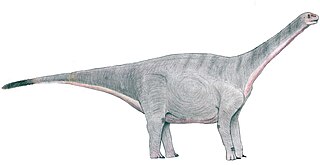 W
WZby is an extinct genus of turiasaurian sauropod dinosaur known from the Late Jurassic of the Lourinhã Formation, central west Portugal. It contains a single species, Zby atlanticus. It is named after Georges Zbyszewski, who studied the geology and paleontology of Portugal.